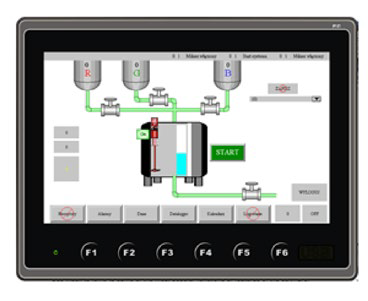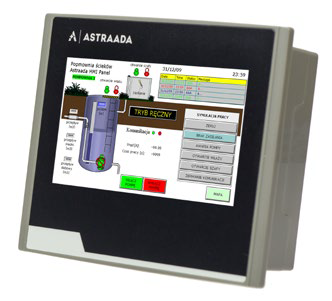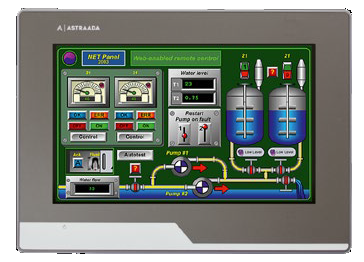How to choose an HMI console for specific production situations?
From this article you will learn:
- How to choose an HMI panel taking into account various criteria,
- You will find answers to frequently asked questions related to choosing a specific model.
There are many situations when it is not known which operator panel to choose to make it as convenient as possible. Usage scenarios are very different, as are user needs. Let's look at these situations. Will you find yourself in any of them?
Example 1
The client needs a panel to operate the production line. The main requirement is the panel's splash resistance and the ability to be operated with gloves.
Due to the use of the panel with gloves, the visualization application should have large buttons so that the operator does not have problems with "clicking". It is also important that the distances between individual buttons are large enough to exclude accidental activation of the inappropriate function.
The recommended screen size in this case is 12-15". Before purchasing the equipment, the customer can use the Astraada HMI CFG software and prepare a visualization of project in the simulator to finally choose which matrix size will be suitable for him. Astraada HMI panels are programmed using this software.

You can download this software for free here: www.astor.com.pl/wspiera (enter Astraada HMI CFG in the search bar).
Astraada HMI panels have resistive screens in which clicking on the screen depends on the pressure force, so the operator can operate the installed HMI application with gloves or using available objects, such as plastic cards, a pen case or a pencil tip. The technology used in this type of screens makes them resistant to dirt - accumulated dust, oil or water drops do not affect the precision of operation.
Example 2
An OEM machine manufacturer needs an HMI panel for a simple control application. The panel should allow you to view and edit several recipes.
If the visualization does not have many elements and the unit price is the key issue, you can easily use a device with a smaller screen diagonal.
4.3” HMI operator panels are perfect for such projects. If ergonomics of use are more important, the AS43TFT0434 HMI panel with a built-in numeric keyboard is recommended . If we need to cut costs, then the AS44TFT0402 model will be better .

The operator can view and edit recipes locally from the HMI panel using ready-made objects or remotely from a PC. Settings can also be updated via the USB port using a pendrive.
Example 3
In a manufacturing company, machine breakdowns often occur due to incorrect operation. The client needs the panel to enable trouble-free operation of a "medium-developed" application and to be able to record activities performed on the HMI panel.
For this type of projects, it is recommended to use HMI panels with diagonals of at least 7-10" so that icons and buttons are clearly visible. As in the previous case, the size of the application determines whether 7" is enough or whether you should invest in a more expensive 10" model.

All operations and events performed on panels can be logged along with time, date and comments. Data can be saved on a pendrive or on MicroSD memory cards in the form of CSV files. This allows for their subsequent, detailed analysis on a PC in a spreadsheet. It is also possible to obtain remote access to data via the FTP server built into the panel. Current and archived data can be analyzed in charts or tables.
If you have more questions about panels and their selection, please contact the product manager of HMI operator panels at ASTOR.
HMI panel – what is it? Read more here.
HMI (Human Machine Interface) operator panels are used to visualize and set operating parameters of objects and machines and to share process information with superior IT systems. They constitute an interface between the operator and the machine and support the user by increasing the intuitiveness of operating the installation. HMI panels facilitate the integration of all devices operating in the installation into one coherent system and offer advanced functions, e.g. data and event logging, monitoring of key parameters, alarming, script support, recipes, multilingual applications, security.
Author:
Wojciech Trojniar

